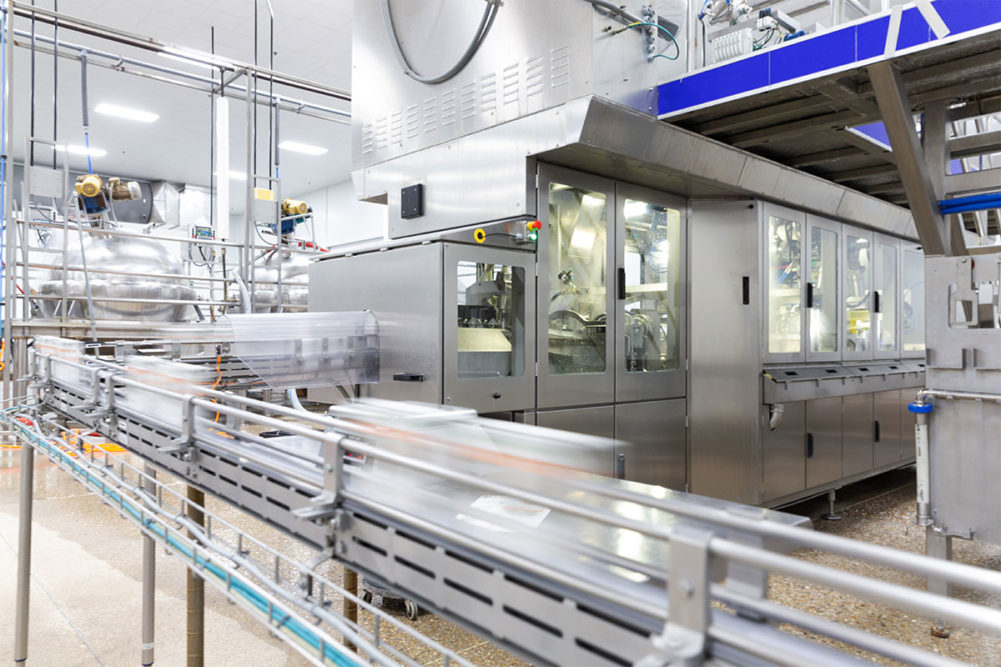This article was published in the September 2021 issue of Pet Food Processing. Read it and other articles from this issue in our September digital edition.
|
|
For spouses and co-owners of Janesville, Wis.-based NaturPak Pet Pawel and Iwona Marciniak, their marriage goes back only slightly longer than Pawel’s involvement with Tetra Pak carton packaging systems. The couple recently celebrated their 36th wedding anniversary and Pawel has 35 years of experience working with Tetra Pak in food processing applications. The couple moved to the United States from Australia in 2002 while Pawel was working for the company. In 2006, Pawel left Tetra Pak and, with Iwona, opened IPM Foods in Beloit, Wis. The human food co-manufacturing company initially focused on producing soups, gravies and sauces in Tetra Pak cartons.
IPM Foods grew over the years and in 2017 the company moved from Beloit to Janesville. At that time, IPM Foods was producing pet food for a single customer that offered human-grade wet pet food formulas. Interest from other pet food brands convinced the couple to use the Beloit facility for pet food production. In 2020, Pawel and Iwona created a separate co-manufacturing venture, NaturPak Pet, to focus on providing wet pet foods and toppers in Tetra Pak cartons to the pet food industry. Also in 2020, NaturPak moved into a new 162,000-square-foot facility, just four miles from IPM Foods’ production facility.
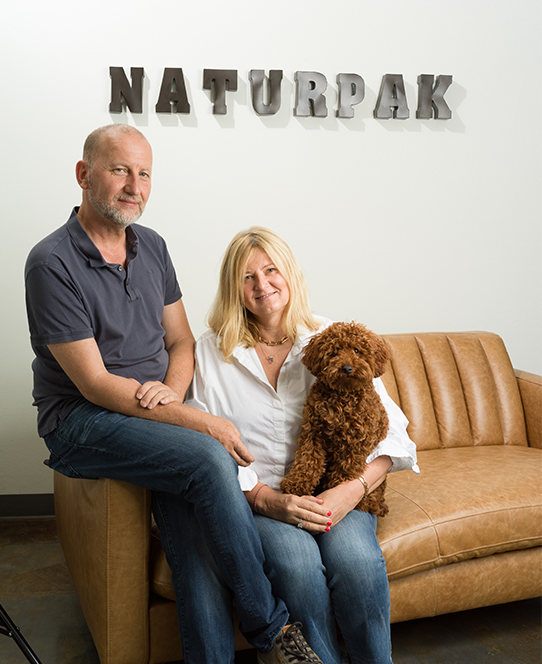 Together, Pawel and Iwona Marciniak have built both IPM Foods and NaturPak Pet into leading providers of quality human foods and pet foods packaged in Tetra Pak cartons. Pictured with Pawel and Iwona is their dog Coco.
Together, Pawel and Iwona Marciniak have built both IPM Foods and NaturPak Pet into leading providers of quality human foods and pet foods packaged in Tetra Pak cartons. Pictured with Pawel and Iwona is their dog Coco.“We knew that we were onto something quite big,” Iwona said. “We had a feeling that this [processing and packaging] platform would grow well in the pet food category, and we moved in the spring of 2020 during the peak of the pandemic to our new pet food facility with two pet food lines in Janesville.”
Wet pet foods seem to be on a roll. Chicago-based market research firm IRI reports wet dog food and wet cat food sales grew 7.7% and 7.2% respectively between 2019 and 2020. According to NielsenIQ, sales of shelf-stable wet pet foods in the United States reached $1.32 billion in 2020, and roughly 33% of dog and cat households reported purchasing all three of the reigning categories in this market: wet food, dry food and treats. This confirms an overarching pet industry trend toward mealtime variety and combination feeding.
“I see the future of this industry being wet food because, for me personally, I cannot survive on potato chips,” Pawel said. “Now and then they’re great but I like my steak to be moist. I like fresh food. Our seven-month-old puppy is the same. He eats all wet food and loves it.”
Similar to IPM Foods’ facility, the NaturPak’s plant is USDA-APHIS inspected, BRC audited and USDA Certified Organic.
The first pet food formulas produced by NaturPak were complete-and-balanced diets typically with meat as the first ingredient. That continues to be the case today.
“The majority of the ingredients in the pet diets we produce have always been meat... very rich and healthy,” Pawel said. “But we also produce toppers and gravies as part of the portfolio of products we offer to our pet food customers.”
Using gravy, broth or a wet meal booster as a topper to dry food is increasingly popular. Market research firm Packaged Facts listed meal toppers and add-ins as a key growth area in 2019 and, in a 2020 survey of pet owners by the same firm, 16% of dog owners and 14% of cat owners had already purchased a meal topper product, with 44% reporting they generally liked the idea of meal toppers. For pet owners who prefer the convenience of dry, introducing a wet formula as an add-on brings some of the nutritional benefits and palatability of wet into a pet’s diet.
NaturPak’s production is currently divided with about 85% dedicated to complete-and-balanced nutrition and 15% to toppers and broths, with the company reporting an increased interest in this latter product category.
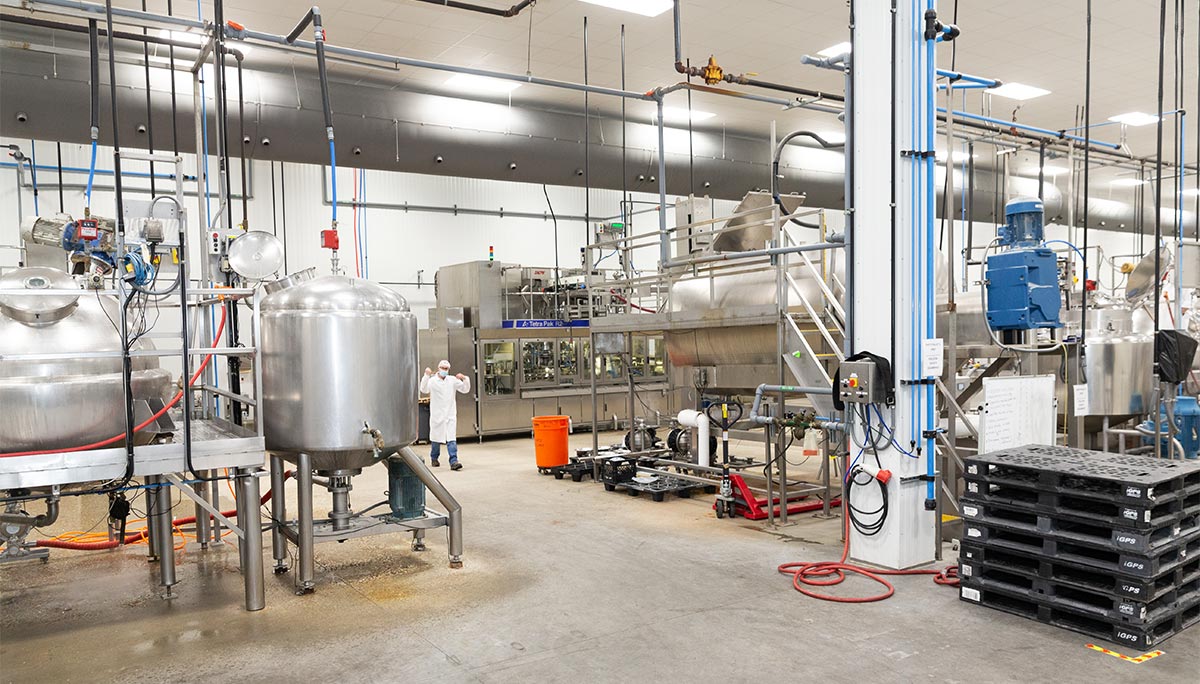 The new 162,000-square-foot facility features two automated wet pet food processing lines.
The new 162,000-square-foot facility features two automated wet pet food processing lines.
The company’s belief in the nutritional benefits of wet pet foods is rivaled only by its commitment to Tetra Pak’s processing and packaging technology.
“It’s packaging for the 21st century that has been around for many years,” Pawel said. “It’s perfect not only from an environmental point of view but also for transportation and durability, which is especially important with the growth in e-commerce. The can had its place a long time ago when that was all that was available, but technology has progressed.”
According to Tetra Pak, cartons are durable, space efficient on the shelf and during transportation, and lightweight, which all contribute to a lower carbon footprint. The packaging is also recyclable with Tetra Pak reporting 61% of US households have access to carton recycling programs and 20% of cartons currently being recycled.
Although pet food in cartons can be produced for any price point, NaturPak’s ingredient and nutrition philosophies pair best with brands offering premium product lines.
|
|
“This platform can use cheap ingredients but at the end of the day we need to present something for our customers and for our pets that is nutritionally balanced, helps them live longer and supports their health,” Pawel said. “Of course, we need to be sensitive about what people can afford but, at the same time from a nutritional point of view, we need to make sure that it’s the right balance of quality ingredients that deliver the required nutrients for the pet.”
NaturPak typically spends six to eight months working with its customers to develop new products that meet all necessary regulatory requirements and its own internal processes designed to ensure the long-term success of the products the company helps bring to market. Products that are currently offered in cans could transition fairly easily to cartons, but they do require some adjustments because NaturPak’s production process is a bit different from typical canning processes. NaturPak has a full-time animal nutritionist on staff who works with customers on product development.
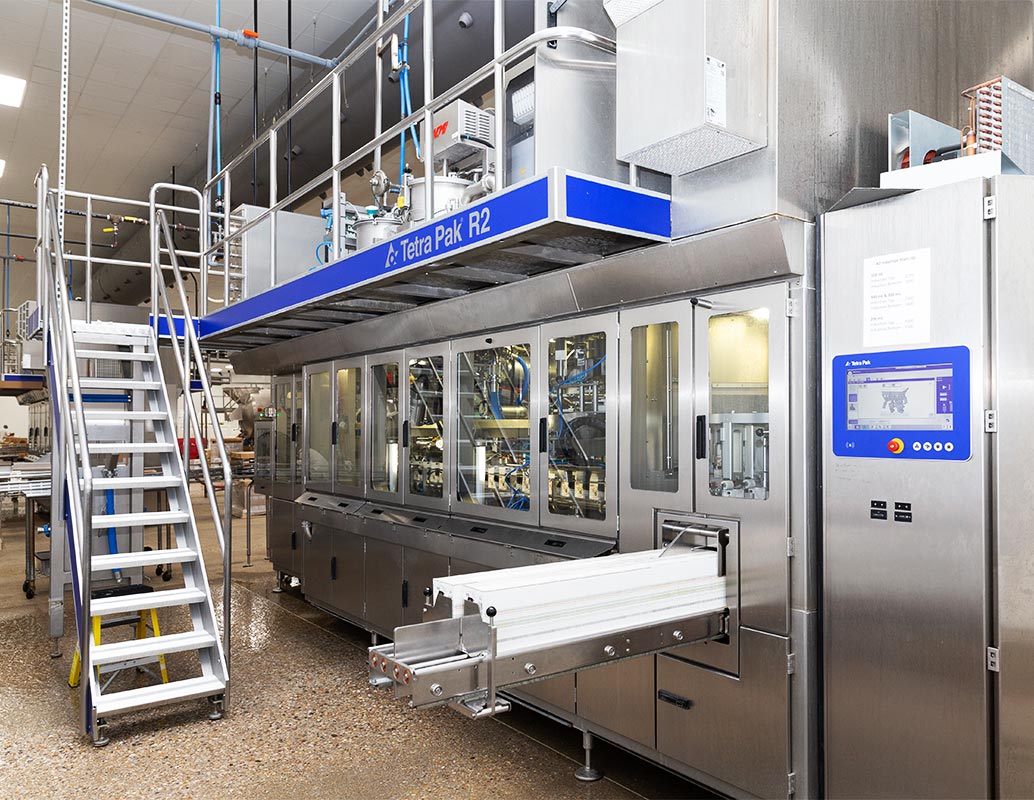 Co-owner of NaturPak, Pawel Marciniak, believes Tetra Pak retortable packaging systems offer a better option than cans and pouches and are ideal for premium wet pet food formulas.
Co-owner of NaturPak, Pawel Marciniak, believes Tetra Pak retortable packaging systems offer a better option than cans and pouches and are ideal for premium wet pet food formulas.
NaturPak offers a slow-cook process, which allows the company to create specific textures and flavors designed for different pet preferences. For example, according to Pawel, cats prefer slow-cooked, very soft-textured meats and dogs enjoy more of a firm texture in meats. The company’s process can be adjusted to accommodate a range of end-product goals.
The NaturPak-Tetra Pak process
When NaturPak moved from Beloit to its new facility in Janesville, the company increased its overall production capacity by 300%. At its current pace, the company anticipates needing to add more carton capacity by mid-2022. Current capacity equates to 50 million cartons annually with plans to add capacity for an additional 25 million packages.
Carton sizes range from 500 ml or approximately 17 oz to 200 ml or 5.5 oz. A 100 ml or 3.5 oz. package will be available from Tetra Pak in 2022 and NaturPak will be adding this new size intended primarily for cat products. The company’s current Tetra Pak systems can accommodate two different carton footprints and varying heights to offer a range of per-package capacities.
NaturPak’s small batch production is divided between two automated Tetra Pak R2 recart filling systems.
“Smaller batches give us better control. When creating products that are required to be nutritionally balanced, it’s important to mix the product right and deliver the right amount of ingredients to every single package,” Pawel said.
“Smaller batches give us better control,” Pawel said. “When creating products that are required to be nutritionally balanced, it’s important to mix the product right and deliver the right amount of ingredients to every single package. We use a batching process to control the proper delivery of the product to each package.”
The batch process typically starts with processing the meat, usually in frozen form. The meat is ground on a Wolfking grinder or diced on a Treif system while other ingredients are weighed and portioned. Then the ingredients are combined in an FPEC mixer and pumped to the batch-mixing kettles. One mixer and three kettles feed each processing line. Each eight-hour shift typically completes eight batches per line and the maximum individual kettle capacity is about 3200 lbs.
“The kettle process is very unique,” said Tommy Vang, research and development supervisor. “The kettles mix batches on an angle, which delivers a more uniform mix from the bottom of the kettle all the way to the top. Therefore, when we’re filling our product, we know it’s going to be the same from the first package all the way to that last package.”
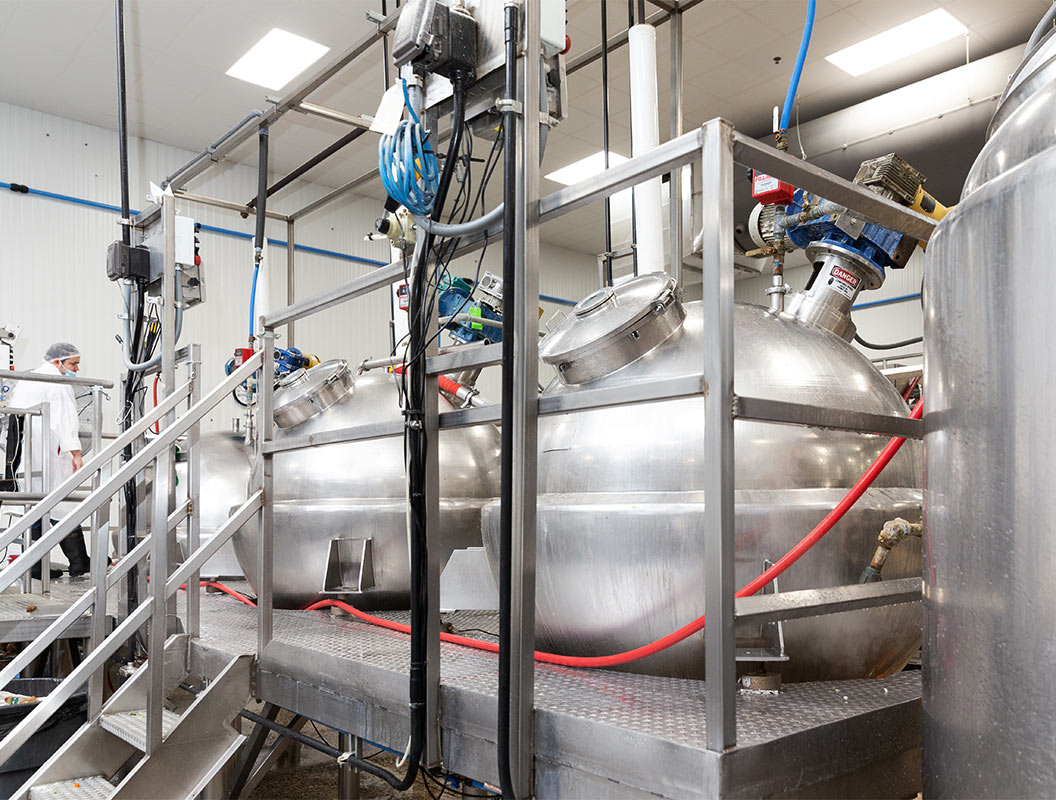 Batch-mixing kettles begin NaturPak’s slow-cook process and help to ensure the correct texture and consistent distribution of ingredients throughout the production process.
Batch-mixing kettles begin NaturPak’s slow-cook process and help to ensure the correct texture and consistent distribution of ingredients throughout the production process. The first step of processing happens when formulas are gently cooked between 160 F and 175 F in the kettles. This begins the slow-cook process and ensures product uniformity before it’s transferred to the filling machines. The Tetra Pak R2 systems form the packaging then fill and seal them.
Once packages are filled and sealed, they are processed on the quality line and inspected against all standard quality check points defined by NaturPak and required by each customer. Part of the quality process includes the use of Mettler Toledo checkweighers and Novus x-ray systems.
From the quality check, cartons move to the sterilization process where the boxes are loaded into one of six Surdry retort chambers and gently cooked further to sterilize the product. Each formula is tested in advance and has custom parameters for heating and holding times at specified temperatures. The horizontal retorts heat products slowly with steam.
Once those parameters are met for each batch, sterilized products are unloaded from the retort chamber with Jorgensen Engineering A/S package handling systems, automatically dried to remove any residual water from the sterilization process, and then put into cases with Tetra Pak cardboard case packing equipment. Each case is then palletized, shrink wrapped and is ready to be shipped.
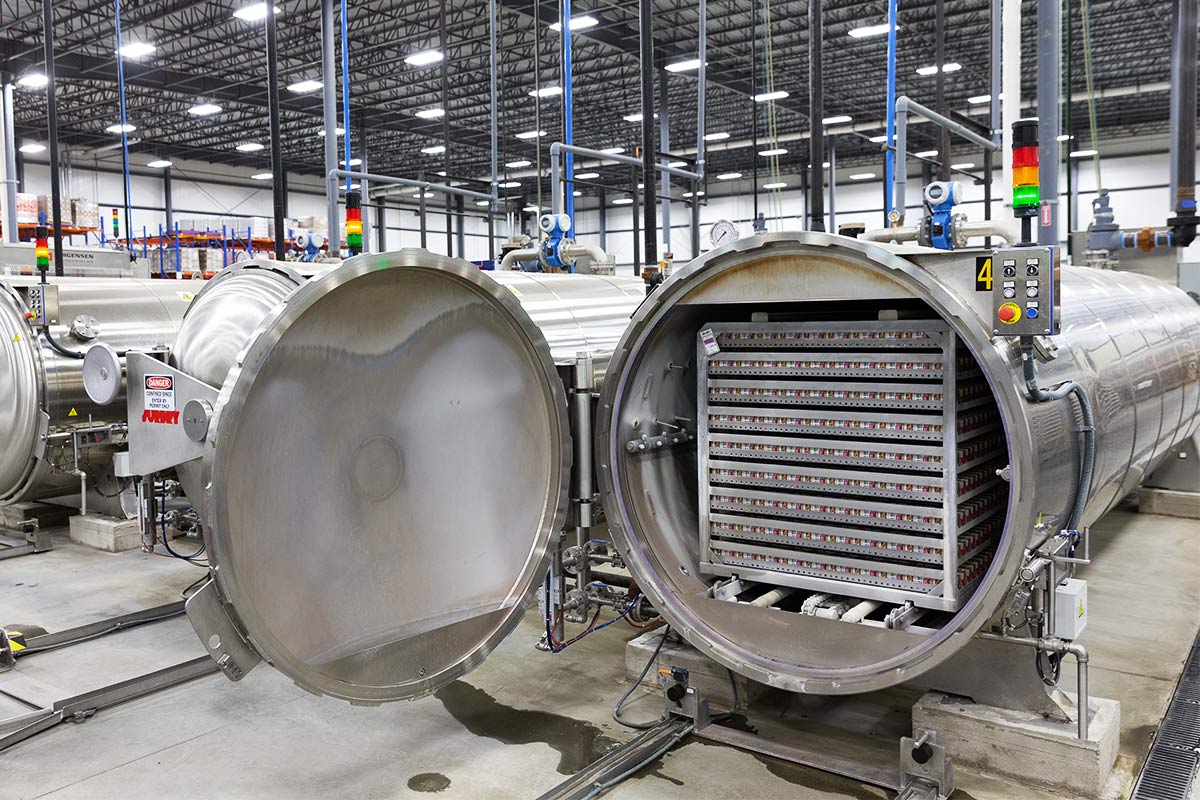 According to NaturPak, cartons can be heated more slowing than cans in retort chambers, giving the pet food processor better control of product texture and flavor.
According to NaturPak, cartons can be heated more slowing than cans in retort chambers, giving the pet food processor better control of product texture and flavor. From that point, products are held for up to two weeks to be tested both in-house and by third-party labs to verify the safety of each batch.
“Not only do we want pets to enjoy our food and the pet parents to have a great experience with it, but we’re going for longevity,” Tommy shared. “We want to make sure that our end customer, the pets, are consuming products that are going to be good for them for their entire life. It comes down to nutrition as well as to make sure that all of the nutrition that goes into every box is going to be consistent throughout the product run.”
Additional processing capabilities at NaturPak include a double fill process where packages are partially filled before a piston filler delivers a portioned amount of an ingredient, such as shredded or diced meat. This unique capability can be used to ensure that an exact amount of a specific ingredient is included in each carton.
NaturPak can also produce a vacuum-stuffed ingredient such as a sausage-like product that can then be added as a component of a formula. This is accomplished using a Vemag stuffer. If needed, these vacuum-stuffed products can be slow-smoked to obtain the right balance of texture and nutritional value using a proprietary technology that belongs to IPM Foods.
Serving both humans and pets
All ingredients for NaturPak customers are stored at NaturPak’s facility but the company can realize an economy of scale by purchasing ingredients in conjunction with IPM Foods. The company utilizes any benefits of combined delivery and combined buying to achieve the best results from an economic point of view as well as from an environmental point of view.
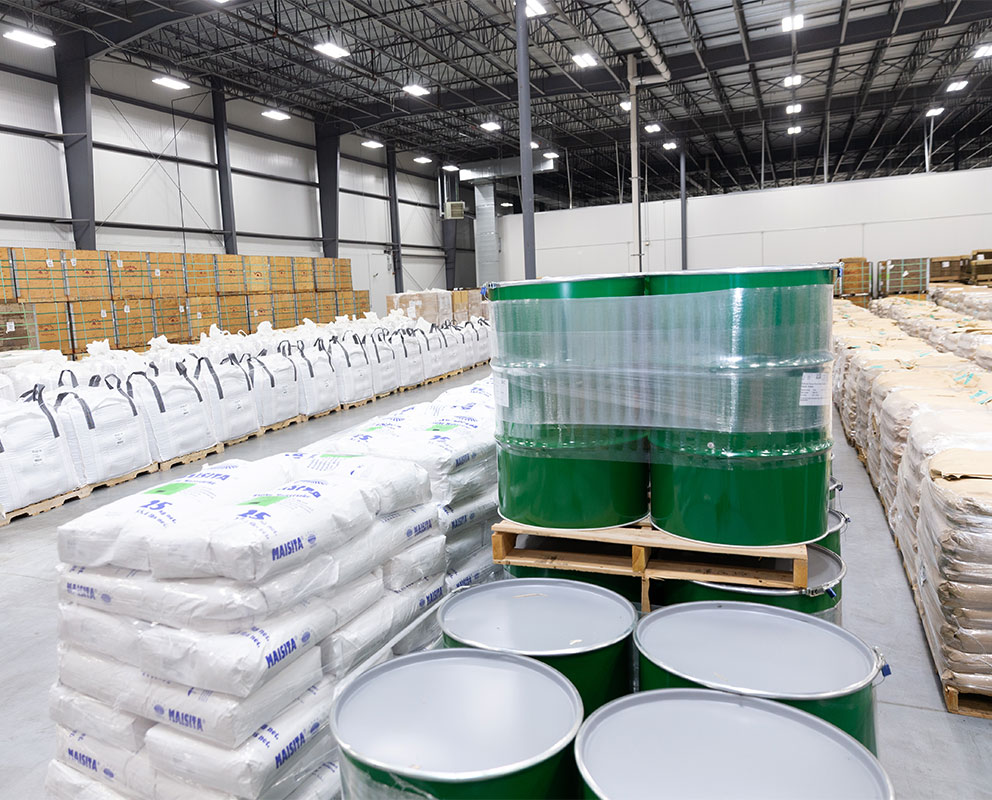 By combining purchasing power with IPM Foods, NaturPak strives to source premium ingredients at price savings it can pass on to its customers.
By combining purchasing power with IPM Foods, NaturPak strives to source premium ingredients at price savings it can pass on to its customers. An ingredient challenge Pawel would like to see improved for premium pet food manufactures involves the meat industry.
“The biggest problem I see is that the meat industry doesn’t see the pet industry as a high-end customer,” Pawel explained. “They see us a little bit as a side business, but it’s not. It’s a sizable business.
“Sometimes we feel like meat suppliers are not taking the pet food seriously enough as an opportunity to grow their business. We are willing to pay the premium price for ingredients because our clients demand good quality. It’s a stigma of people thinking that pet food is something that humans would never eat. I personally have tried a lot of our products and if it had more salt, it would be perfect. It would make me wiggle my tail if I had one.”
Pawel estimates that about 70% of NaturPak’s production is with human-grade ingredients. He said the company also uses a number of ingredients that are a byproduct of human food processing.
“We treat every single ingredient the same as we do in our human food processing, but in our society there are certain ingredients humans don’t prefer to eat,” Pawel said. “An example is a cow’s stomach. The top of the cow’s stomach will be used for human consumption in soups, for example, and the bottom of the stomach that is darker will be used for animals. It’s still the same stomach, it’s just a different portion of the same stomach. It’s a little bit of a misleading statement to say ‘not for human consumption.’ That just means the ingredient lost the USDA chain of custody for human consumption.”
NaturPak’s business model is focused on developing a symbiotic relationship with customers who have the same nutritional commitment to quality ingredients and the same desire to grow a brand and increase its market penetration.
“We like to produce a specific product for a specific customer and for a specific need,” Pawel said. “It’s a dedicated effort for each customer. It’s not a one-size-fits-all.”
“We like to produce a specific product for a specific customer and for a specific need. It’s a dedicated effort for each customer. It’s not a one-size-fits-all,” Pawel said.
The ultimate customer NaturPak strives to please, however, is not the pet food brands or even the pet owners.
“Our customer is actually the pet that wiggles its tail when they eat,” Pawel said. “I like to say we make pets happy twice, once when they eat great and the next day when it comes out the other end properly. It’s an indication of success on both sides.
“We believe pets should be fed wet food,” he continued. “As a company, we will continue in this direction. I believe in wet food, and I believe in the packaging format we provide to deliver good food for our pets in portion-controlled meals. At the end of the day, our client is your pet.”
|
|
Read more exclusive pet food and treat processor profiles from Pet Food Processing.
